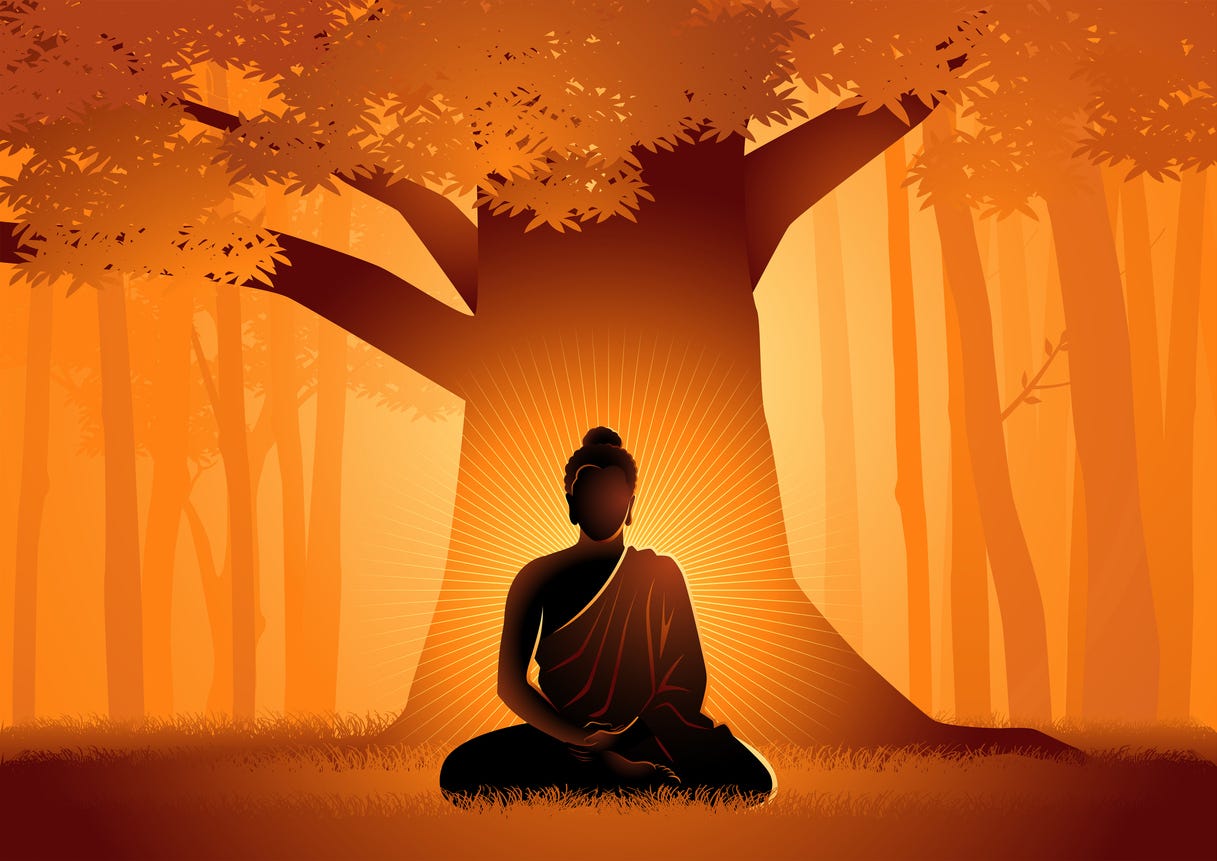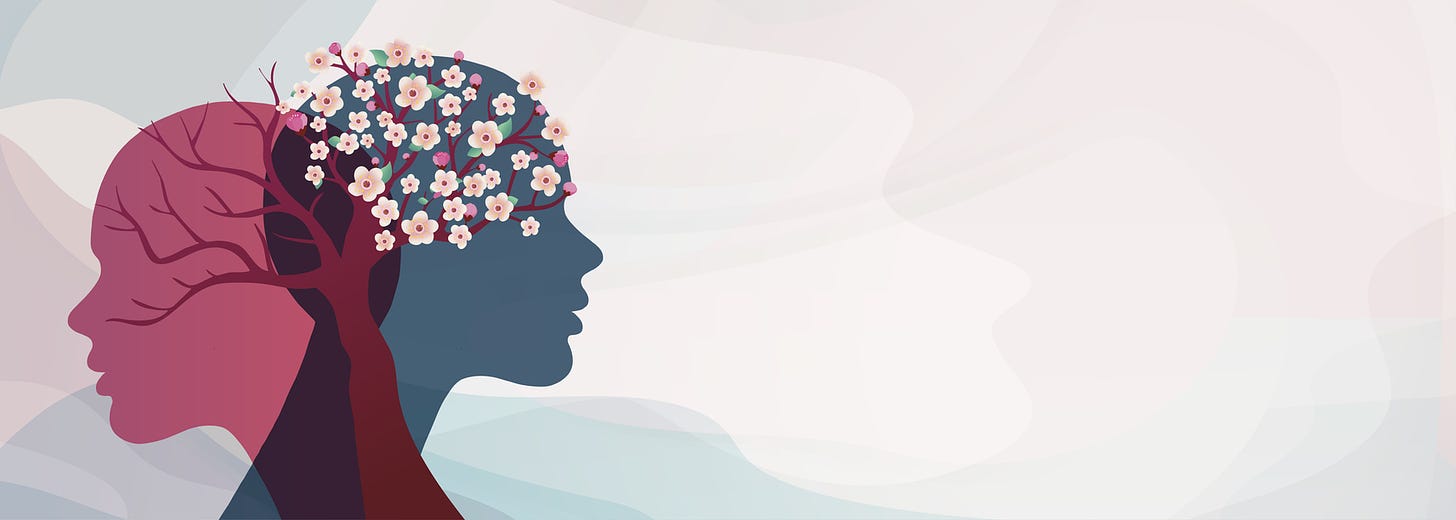Millions of people believe in rebirth but on what basis can we say this belief is valid? Is it better to discard rebirth so Buddhism makes sense to modern people?
In the first watch of the night, when Gautama sat under the bodhi tree in meditation, he saw with his mind’s eye all the previous lives he had had over thousands of years. This insight, based on meditation experience, was the basis for his teaching on rebirth, the idea that all beings are caught in a continuous cycle of life and death. Death is not the end, it is the gateway to a new beginning.
Indian religions – Buddhism, Hinduism and Jainism – all hold that we have a series of lives, and that death marks the end of one life and the beginning of a new one. This continuous cycle of life and death is called samsara. It is characterized by suffering. Nobody wishes to die but the fact is that death spares no-one. Indian religions link together the principles of karma and rebirth, with the idea that every moral action must be accounted for in this or future lives, and that many experiences in the present lifetime are consequences of past actions performed either earlier in this life or in previous lives. The ultimate goal of every religion that is indigenous to India is freedom from the cycle of rebirth or reincarnation. Karma and rebirth are profoundly connected in the sense that if one is free from the law of karma one will also be free from automatic rebirth. While all three Indian religions share these points in common, each has a distinct way of explaining them.
Rebirth in Buddhism is not the same as reincarnation in Hinduism. The Hindu idea of reincarnation is that the essence of our self (atman) survives without our body, continues after death and joins another body to live a new life. This process happens for an unimaginably long period of time until we reach liberation (moksha). There is therefore personal continuity from one life to the next; we can say that it is ‘me’ or the ‘essence of me’ that is literally re-incarnated into another body. ‘I’ am therefore identified not with my body but with my mental self and life force.
The word ‘reincarnation’ is not used in Buddhism; instead the term is ‘rebirth’ or ‘rebecoming’. Buddhism teaches that there is no essential self so that means there is no ‘self’ or soul that journeys from one life to another. That is why rebirth is a complex process and why Buddhists have developed elaborate theories to explain exactly what it is that continues after death if we have no essence or soul.
Rebirth should not be confused with the Christian concept of resurrection. Resurrection is a theory that assures believers that they will be ‘born again’ when the Christ returns to Earth at the final Judgment. This idea entails not only spiritual continuity but physical continuity and is the reason why Christians are buried and not cremated. It is believed that the physical body will come back to life and will be re-animated by the soul. In Buddhism, as in Hinduism, the physical body is subject to death, by definition; it is impermanent and after death all the elements that make it up disintegrate and scatter. This is seen as a natural process, and neither rebirth nor reincarnation ever entail the physical continuity of a person in another life.
Where is the evidence?
Hundreds of millions of Buddhists, Hindus and Jains believe in rebirth or reincarnation, and a Gallup poll in the USA at the turn of this century showed that 23% of Americans believe in it, too. But where is the proof? How can we decide whether rebirth is valid or not? Indeed, is it possible for rebirth to be scientifically proven? In my book Discovering Buddhism I consider the work of modern academics researching rebirth and evaluate their methods and conclusions.
Can rebirth be proved by logical reasoning?
Buddhists consider that rebirth can be validated by logical reasoning, but only to a point. The argument is as follows: everything in the universe is produced by causes, and those causes must be related to their effects according to the law that like produces like. Physical phenomena are produced by physical causes, so our body is produced by a sperm and egg, together with associated physical conditions such as food, drink, temperature and so forth. Similarly, our mind is produced by mental causes, specifically the previous moments of our past consciousness. Buddhist philosophers do not accept that the mind is reducible to matter, or that the mind can be produced by, or from, matter. Mind is not simply the epi-phenomenon of a complex nervous system, for example. The mind is not the brain. It follows that mind can only be produced by a previous moment of the same continuum of consciousness.
Most scientists usually consider that thoughts are caused by chemical changes in the brain, and they in turn create physiological changes in the body. But their working assumption is that mind depends on the body/brain. Until very recently, little research had been carried out on the basis of the opposite assumption: that pure thought can give rise to chemical changes in the brain. This field of research is evolving very rapidly and recent work on the effects of meditation, mindfulness and compassion practice on the brain goes some way to indicate that the trained mind can indeed effect chemical and physiological changes in the brain and nervous system. The philosophical implications of such findings have yet to be fully determined. If one accepts the body/mind model of Buddhism, where mind is a distinct principle in its own right, then rebirth becomes logically possible and even probable.
Buddhists redefine the debate
Buddhist scholars also take the debate further and redefine its parameters. The American scholar Robert Thurman writes:
The inner science of Buddhism is based on a thorough and comprehensive knowledge of reality, on an already assessed, depth understanding of self and environment, that is to say, on the complete enlightenment of the Buddha. [i]
Buddhism is an ‘inner science’, a science of the ‘inner world’, a science of the mind. The Buddha and the Buddhist masters who followed him, came to their conclusions about the mind, and about life and death, after meticulous study and experiential exploration. The knowledge gained through enlightenment is just this: complete and thorough knowledge of the nature of the mind and the universe. And the source of the Buddhist teachings on death and rebirth is the enlightened mind itself. As The Tibetan Book of Living and Dying explains:
(This) answer may seem initially difficult to understand for many readers, because the notion of the mind the West now has is an extremely narrow one. Despite the major breakthroughs of recent years, especially in mind/body science and transpersonal psychology, the great majority of scientists continue to reduce the mind to no more than physical processes in the brain, which goes against the testimony of thousands of years of experience of mystics and meditators of all religions. [ii]
Enlightenment and the possibility for a human being to become a buddha mean that Buddhism redefines the boundaries of what it is possible for humans to know. The Buddhist teachings on the cycle of life and death are based on insight and knowledge gained through enlightened meditation states and mystical states, and this knowledge is accessible to any human engaging in the appropriate religious practices. That is why one can argue that this knowledge is valid because it is replicable; anyone engaging in such meditations will have the same knowledge as the Buddha had. Indeed, this is exactly what the tradition claims: that subsequent meditators and mystics shared the same insights as the Buddha. Buddhists, certainly from the Mahayana and Vajrayana traditions, therefore believe in the authority of mystical knowledge that is replicable and verifiable against another’s experience, and that does not contradict reason. This is the basis of their theory of rebirth.
The Buddhist path spans many lives
Buddhist philosophers put forward a number of logical explanations of rebirth covering topics such as the nature of what continues after death, the events that take place between one life and another, and the philosophical reasons justifying rebirth based on the nature of the mind. They did not relegate rebirth to the domain of blind faith and unreasoned belief as critics such as Stephen Batchelor claim today. On the contrary, they have addressed the questions and challenges it raises in some detail. Certain contemporary thinkers charge Buddhism with the fault of accepting rebirth on the basis of faith alone, thereby attempting to weaken its validity, but given the lengthy debates on the subject in the scriptures that charge is unfair and unfounded.
Please support my work and help me continue writing by taking a paid subscription
One well-known discussion is found in the works of the 7th century Indian master Dharmakirti. He is concerned about establishing the validity of Buddhist teaching using logical reasoning and not relying exclusively on the authority of the scriptures. That is because his audience included non-Buddhists, and scriptures hold no authority for anyone outside of the religion with which they are associated. He ascribes the validity traditionally accorded the scriptures to the qualities of the person who taught them, namely, in this case, the Buddha. This leads to the question of what it is that renders the Buddha authoritative, a very important point given that the teachings on rebirth arise from the Buddha’s enlightenment.
Dharmakirti identifies two causes for the Buddha’s spiritual authority: his perfect intention, which is the great compassion to benefit beings, and his perfect training, following the path and teaching it to others. He then identifies the two results that ensue from those causes, which are the benefit for oneself – the complete abandonment of all mental defilements and the realization of ultimate wisdom – and the benefit for others crystallized in the teaching of the Four Noble Truths.
It’s in his discussion of the great compassionate motivation of the Buddha that the question of rebirth is addressed. The point Dharmakirti makes is that in order to have great compassion one must train repeatedly in cultivating compassion over the span of many lifetimes. The commentary states:
The perfect cause that is the means to achieve the state of an authoritative being is the cultivation repeatedly over many lifetimes of the great compassion that wishes to liberate all wandering beings forever from the great ocean of suffering.[iii]
In other words, if we each had only one single lifespan, then it would be virtually impossible for an ordinary being ever to attain enlightenment. Enlightenment, whether in terms of nirvana or in terms of buddhahood, requires diligent and repeated application on the spiritual path over numerous lifetimes. This is therefore a crucial reason for accepting rebirth, since if the cycle of life and death were to be rejected this would put the entire Buddhist path in jeopardy. Within the confines of a single life one could, of course, lead an ethical life and reap certain immediate forms of happiness but Buddhism is not primarily concerned with such a mundane goal. Within a single lifetime the transcendental goal of enlightenment would not be feasible. This shows that the principle of rebirth is integral to Buddhist thought and that Buddhism, as a perspective and a path, cannot do without it. The proposal to discard rebirth in order to make Buddhism palatable for people today is not acceptable because it dismembers Buddhism itself.
Buddha Shakyamuni was no exception to the rule. The Jataka Tales recount stories from hundreds of the Buddha’s previous lives, some virtuous and some unvirtuous. Over the course of these existences (as both humans and animals) he learns lessons, perfects his qualities and skills, and gains understanding of life. The life of Buddha Shakyamuni is seen as the culmination of all these previous existences: it is the point at which his ignorance has been overcome and his compassion, wisdom and skills mature so he is able to attain buddhahood. All beings, even buddhas, are therefore understood to have honed their spiritual accomplishments over many lives.
In the end, understanding rebirth may well be similar to understanding no-self in the sense that logical explanations alone are usually not enough to convince us of such unfamiliar truths. Religious experience appears to be the main factor that brings complete personal conviction about rebirth: experiences such as NDEs, past life memories or insights in meditation. Nowhere in the Buddhist teachings is blind faith advocated for anyone, in fact it is classified as a mental affliction rooted in ignorance. Maybe we need to keep an open mind and have a little patience before we are able to see deeper truths for ourselves.
Does the idea of rebirth ring true to you? Share your views in the Comments.
For more see my book Discovering Buddhism https://troubador.co.uk/bookshop/religion-beliefs/discovering-buddhism also available on Amazon.
[i] Robert Thurman, Inner Revolution, Riverhead Books, 1998.
[ii] Sogyal Rinpoche, The Tibetan Book of Living and Dying, HarperCollins, 1993, p.13.
[iii] Establishing Validity, Karmapa Chodrak and Dharmakirti, KTD Publications, Woodstock, New York, 2016, p.61.
Photos from istock







Dominique- I’m unfamiliar with this philosophy so it’s refreshing to learn something new. Buddhist philosophy definitely has some strengths that we can all learn from. I appreciate you sharing this. Hope you’re well this week? Cheers, -Thalia